Quick Links: About Us - Contact Us
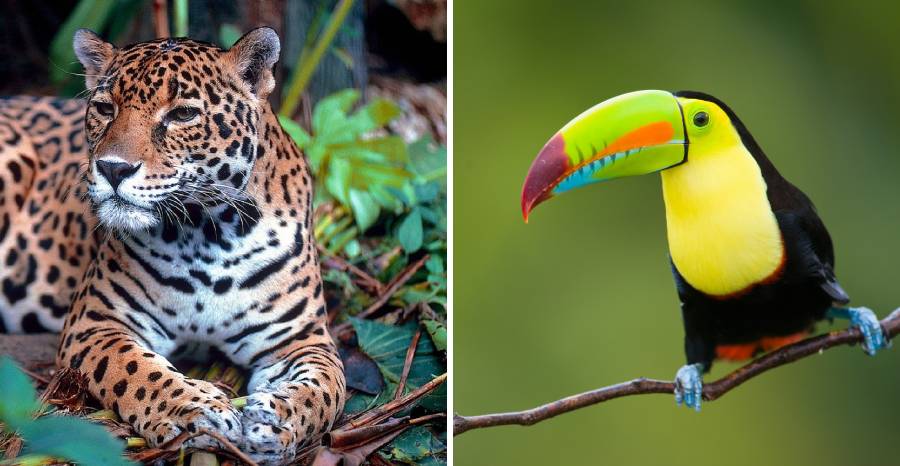
Belize is a hidden gem for wildlife lovers. Nestled between Mexico and Guatemala, this small Central American country packs a mighty biodiversity punch. With lush rainforests, vibrant reefs, wetlands, and protected reserves, it’s one of the best places to see animals in their natural habitat – no cages or glass walls required.
From jaguars prowling through the jungle to manatees gliding beneath turquoise waters, Belize offers rare and authentic wildlife encounters. If you’re planning a trip and want to experience the wild without stepping into a zoo, this guide is your go-to.
1. Cockscomb Basin Wildlife Sanctuary: Jaguar Territory

Welcome to the world’s only jaguar preserve. Spanning over 150,000 acres in southern Belize, Cockscomb Basin Wildlife Sanctuary is home to the elusive jaguar, along with pumas, ocelots, howler monkeys, and over 290 bird species.
While spotting a jaguar is rare due to their stealth, the sanctuary’s well-marked hiking trails, waterfalls, and dense forests offer many other wildlife sightings. Early mornings and dusk are the best times to catch animals in action. Don’t miss the chance to float down the South Stann Creek River in an inner tube – you might spot tapirs and tropical birds along the way.
2. Community Baboon Sanctuary: Up Close with Howler Monkeys

Located near Bermudian Landing, the Community Baboon Sanctuary is not your typical nature reserve. It’s a community-driven conservation project where more than 200 black howler monkeys (locally called “baboons”) roam freely.
Visitors can take guided tours with local residents who explain how traditional farming coexists with monkey habitat preservation. Expect to see troops of howler monkeys swinging through the trees above and hear their unforgettable guttural calls echoing through the forest. This stop is great for families and photographers alike.
3. Hol Chan Marine Reserve & Shark Ray Alley: Sea Life Safari

Wildlife in Belize isn’t limited to land – Hol Chan Marine Reserve, just off the coast of Ambergris Caye and Caye Caulker, is an underwater wonderland. Hol Chan (“Little Channel” in Maya) is a protected marine reserve known for its coral reefs, sea turtles, and abundant tropical fish.
Adjacent to it is Shark Ray Alley, where you can snorkel with nurse sharks and stingrays in crystal-clear water. While it may sound intimidating, these gentle creatures are used to humans and pose no threat. This area is one of the best snorkeling spots in the Caribbean and it’s all 100% wild.
4. Mountain Pine Ridge Forest Reserve: A Different Side of Belize
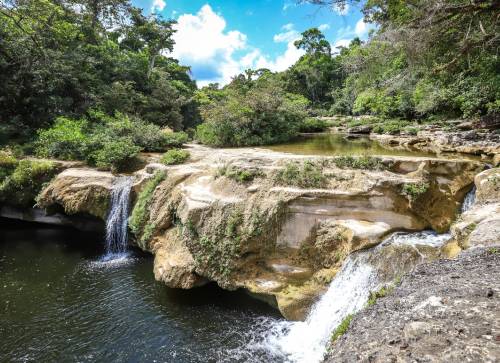
Trade the tropics for towering pine trees in Mountain Pine Ridge, a 300-square-mile highland forest in western Belize. It’s home to species not often seen elsewhere in the country, like white-tailed deer, river otters, armadillos, and the majestic keel-billed toucan (Belize’s national bird).
This region’s cooler climate and rugged landscape attract fewer crowds, giving you a better chance of spotting animals in peace. Don’t miss natural landmarks like Big Rock Falls, Rio Frio Cave, and Rio on Pools while you’re there.
Unlock Exclusive Tips, Offers, and Guides.
Subscribe now and be the first to access this limited-time offers.
5. Crooked Tree Wildlife Sanctuary: Birdwatcher’s Paradise
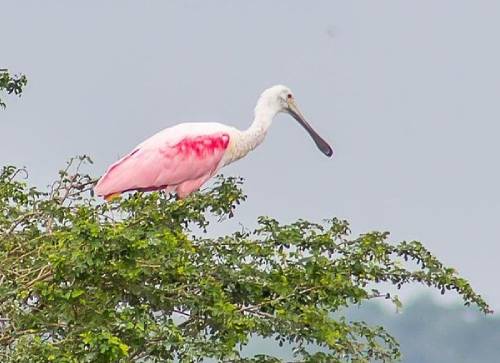
If birdwatching is your thing, Crooked Tree Wildlife Sanctuary is your haven. Located about 30 miles from Belize City, this RAMSAR-listed wetland is home to over 300 bird species.
The Jabiru stork, one of the largest flying birds in the Western Hemisphere, is the star attraction, especially during the dry season (November to May), when water levels drop and birds gather in huge numbers. You can explore by foot or on a guided boat tour. Binoculars recommended!
6. Swallow Caye Wildlife Sanctuary: Manatee Encounters
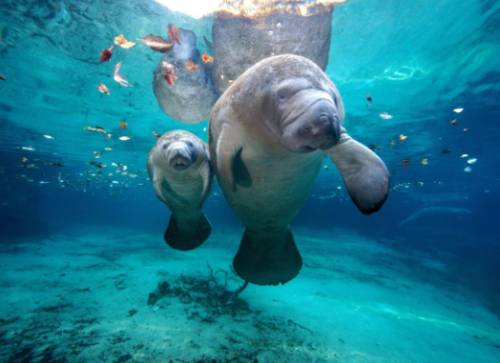
For a truly serene experience, head to Swallow Caye, a protected marine area dedicated to the endangered West Indian manatee. This gentle sea cow can be spotted grazing on seagrass in the shallow coastal waters southeast of Belize City.
Unlike other tours that chase wildlife, Swallow Caye enforces strict eco-guiding practices, keeping a safe distance and turning off boat engines to reduce stress on the animals. If you’re lucky, you’ll see manatees surface for air just a few feet away.
7. Shipstern Nature Reserve: Northern Belize’s Hidden Gem
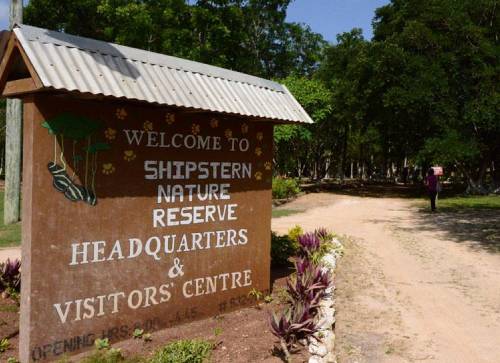
For travelers seeking off-the-beaten-path experiences, Shipstern Nature Reserve in the Corozal District is a must-visit. This 20,000-acre reserve encompasses tropical dry forests, wetlands, and lagoons.
Wildlife sightings include crocodiles, deer, foxes, tapirs, and even jaguarundis (small wild cats). The reserve is particularly quiet and uncrowded, ideal for nature photography and those looking to avoid tourist-heavy locations.
8. Laughing Bird Caye National Park: Coral and Creatures
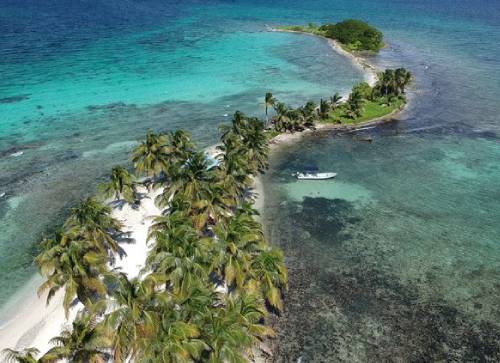
Accessible by boat from Placencia, Laughing Bird Caye is a small island surrounded by coral reef teeming with marine life. It’s a UNESCO World Heritage site and a designated marine national park.
The shallow reef makes it perfect for beginner snorkelers. Expect to see parrotfish, angelfish, barracuda, starfish, and even eagle rays. While you won’t find big terrestrial animals here, the coral biodiversity is astounding and completely natural.
Tips for Ethical Wildlife Viewing in Belize
- Go with certified guides who follow eco-tourism standards.
- Keep your distance. Don’t try to touch, feed, or disturb animals.
- Stay quiet. Loud noises scare off wildlife.
- Take nothing, leave nothing. Don’t remove natural items or leave trash.
- Use reef-safe sunscreen when in marine reserves.
Belize’s wildlife thrives when travelers act responsibly. The best encounters are the ones that leave nature undisturbed.
Travel Tips for Wildlife Explorers
- Best Time to Visit: Dry season (Nov–May) for better visibility and more wildlife activity.
- What to Pack: Binoculars, mosquito repellent, waterproof shoes, light clothing, refillable water bottle.
- Photography Tip: Bring a zoom lens for distant wildlife and waterproof housing for underwater shots.
- Getting Around: Domestic flights, shuttles, and local guides can help you reach remote reserves.
Final Thoughts
Belize is one of the few places where you can witness wild animals in their natural environment, from dense rainforests to open seas, no zoo required. Whether you’re spotting toucans in Mountain Pine Ridge or snorkeling with nurse sharks off Ambergris Caye, Belize delivers unforgettable experiences for nature lovers.
So skip the glass enclosures and go where the wild things truly are. Belize is waiting – wild and unfiltered.

